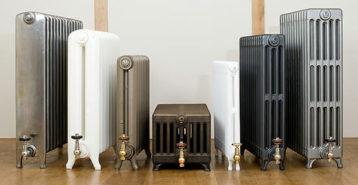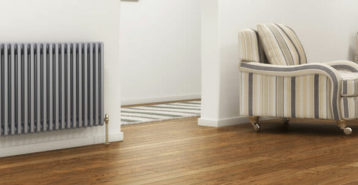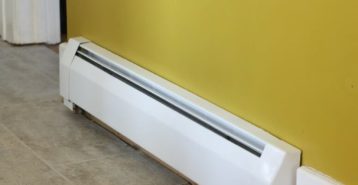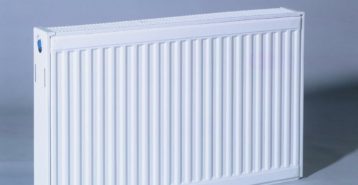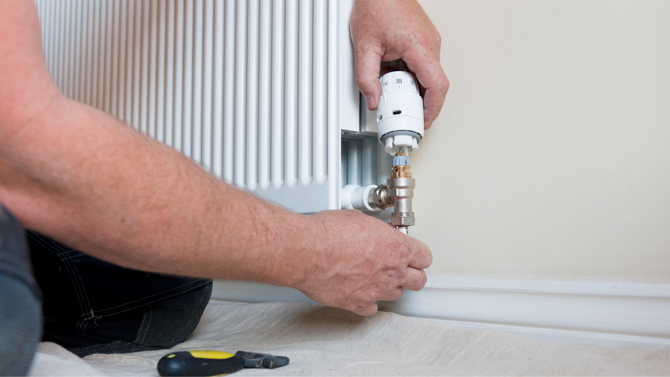How Do Radiator Heaters Work?
Radiator heating systems work by circulating hot water or steam through the radiator’s metal body, which then radiates heat to the surrounding air. Here’s how the process works:
- Heat Source: A boiler heats water or generates steam.
- Heat Transfer: The hot water or steam travels through pipes to the radiator.
- Air Warming: The radiator’s metal fins heat up, warming the surrounding air through conduction and radiation.
- Natural Circulation: Warm air rises, allowing cooler air to flow in and be heated, creating a natural convection cycle.
This cycle continues until the room reaches the desired temperature set on the thermostat.
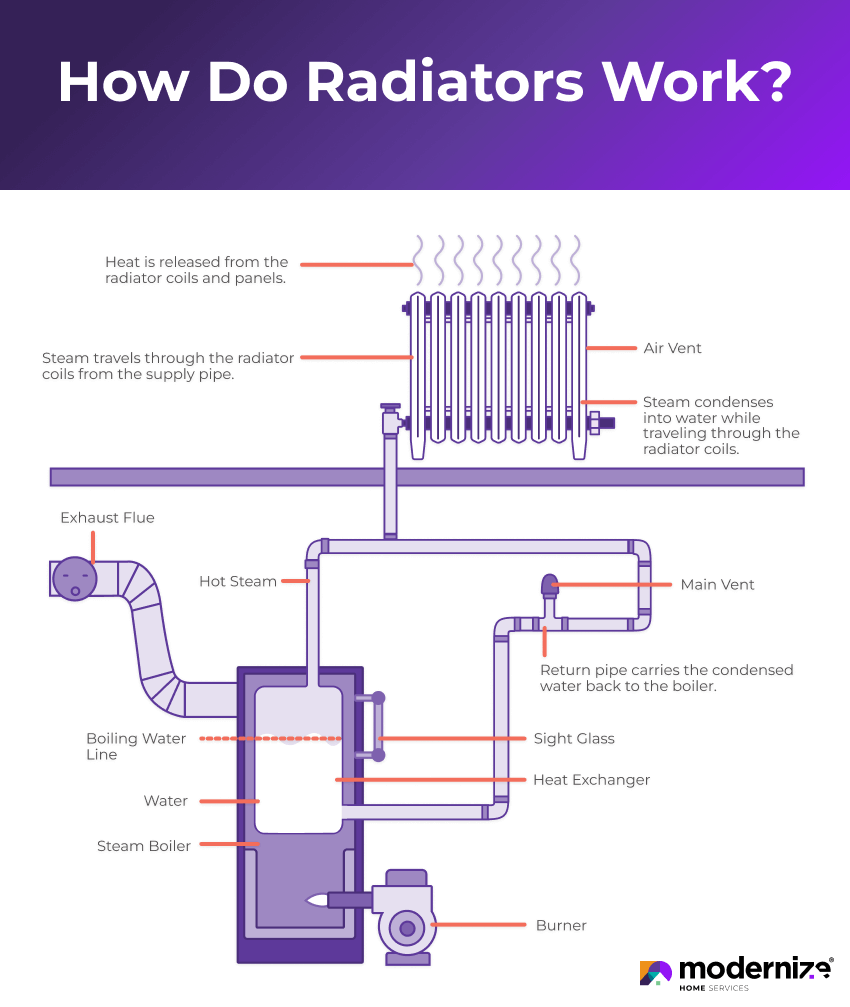
Radiator Heat Transfer
If you have ever looked at a heat radiator, you will notice that most of them are heavily folded. They have a bunch of creases and are made of some type of metal like cast iron. The creases or folds are designed to increase their surface area so that the metal comes into contact with more air.
Natural Air Circulation
It is uncommon for a home heat radiator to have any sort of blower because it simply is not needed. As the air surrounding the radiator heats up, it rises up and out of the way and new cooler air comes in to take its place. A rotational current of air forms around the radiator causing all the air of the room to slowly heat up.
Radiators are one of the oldest and most effective ways of heating a home. They are still used in buildings all over the world today and there are only a few heating options more effective being relied on. They remain desirable because of their simplicity and their ability to heat a space evenly and comfortably. In order to get the most out of your radiator heating system, or decide if radiators are the right option for you, it is important to understand how they work.
How Do Steam Radiators Work?
Steam radiators use steam from a boiler to distribute heat. They’re effective and offer powerful heating but require regular maintenance to avoid pressure issues.
- How It Works: Steam rises through pipes, fills the radiator, and releases heat as it condenses back into water. The steam’s thermal energy transfers to the radiator’s metal body, which radiates the heat into the surrounding space. As the steam cools, it converts back into water and flows back to the boiler to be reheated. This cyclical process ensures a steady and efficient heat distribution throughout the home.
- Advantages:
- High heating capacity, ideal for colder climates.
- Simple and durable design with fewer moving parts.
- Compatible with older homes and historical buildings.
How Do Hot Water Radiators Work?
Hot water radiators circulate heated water through the system. They are more common in modern homes.
- How It Works: A pump circulates hot water from the boiler through the radiators and back again. As the water flows through the radiators, the metal body absorbs the heat and transfers it to the surrounding air. This method allows for consistent and efficient heating, making it ideal for homes of all sizes. Modern hot water radiator systems often include temperature controls and thermostatic valves to regulate heat output and improve energy efficiency.
- Advantages:
- Efficient heat distribution.
- Compatible with a wide range of heating systems.
- Quiet operation compared to forced-air systems.
How Do Electric Radiators Work?
Electric radiators are standalone units that use electricity to generate heat, ideal for supplemental heating.
- How It Works: An electric element heats the radiator, which then warms the room. Electric radiators often feature advanced controls, including programmable timers and thermostats, allowing homeowners to customize heating schedules and reduce energy consumption. These radiators are perfect for areas without existing central heating or for supplementing existing systems in specific rooms.
- Advantages:
- Easy installation with no need for plumbing.
- Portable options for flexible heating.
- Energy-efficient models available with smart controls.
Balancing the Radiator Heating System
Unlike other heating systems, like forced air, where balance is built right into the original design of the unit, radiators need to be balanced in order to get a good level of heat output from all the units. This balance is achieved by controlling how fast hot water is able to flow through each radiator. The slower the water flows through the radiator, the more heat is given off. If it flows through the system faster, than less heat is given off from the water.
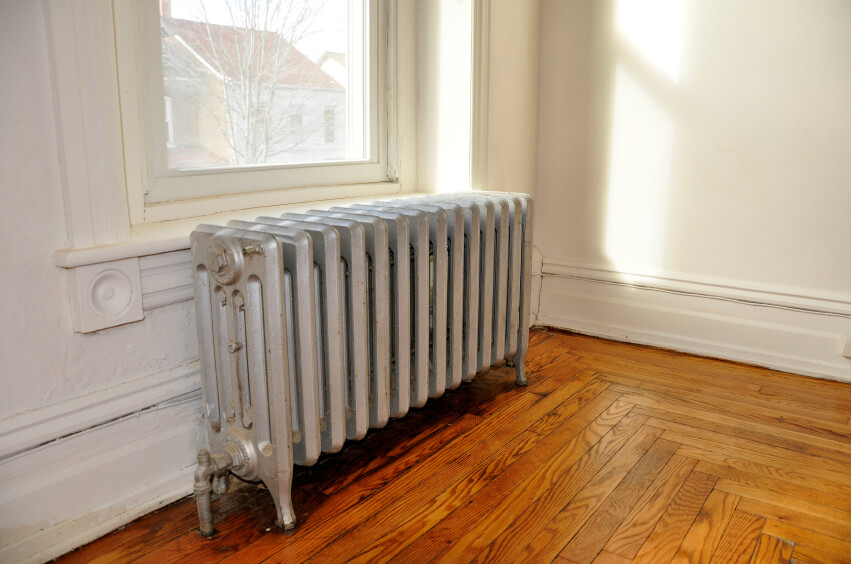
Radiators functioning properly will give off approximately 10 degrees Celsius from one end to the other before moving on to the next radiator in your home. Testing for this is a simple process:
Step 1: Leave a thermometer on the inlet pipe of the radiator when water is flowing through it to see what the temperature is and then put it on the outlet pipe to see what the water temperature of the leaving water is.
If the temperature drops more than 10 degrees Celsius, the water is taking too long to travel through the radiator and giving up too much of its heat to this location.
Step 2: Adjust the thermostatic radiator valves to achieve an even temperature drop across all radiators and let water flow into the radiator faster. If it is not dropping enough, the water is flowing too quickly and the valve needs to be closed a bit.
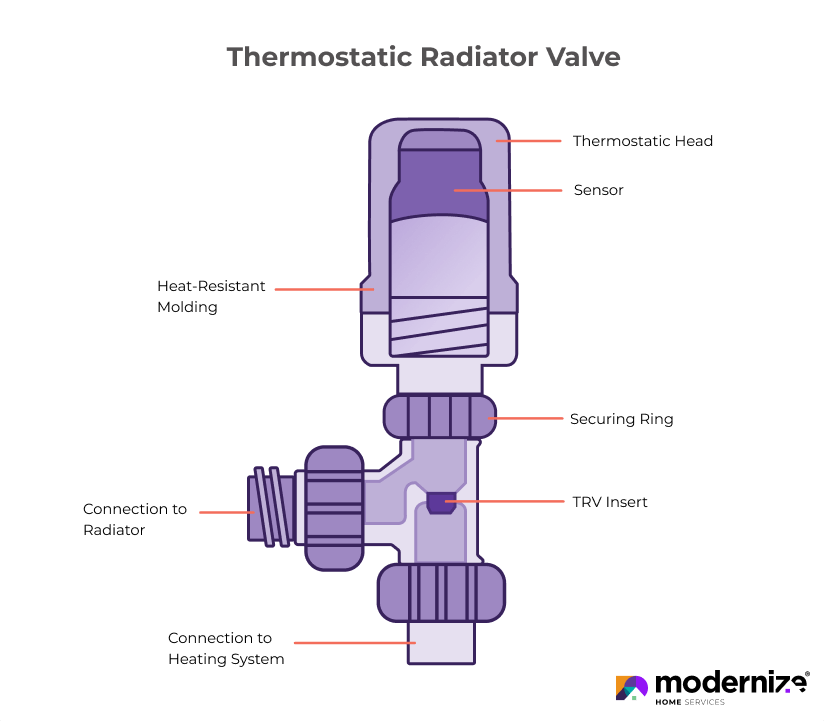
Why Consider Radiators for Your Home?
Homeowners have many options when it comes to heating systems. If your choice is to keep your radiator maintained and in good working order, you can expect the energy efficiency and cost effectiveness to offset potential repair and installation costs. The cost of radiator repair and installation is paid back many times over with a properly running radiator that will provide ample warmth for years to come as long as it is serviced and maintained annually.
If you are in need of a professional HVAC technician to look at your radiator and make sure it is running properly, Modernize’s network of expert HVAC professionals can help.
Compare top-rated HVAC pros in your area.
Read real homeowner reviews, explore qualifications, and view promotions. Modernize makes it easy to browse professionals and find one that will be perfect for your project.



